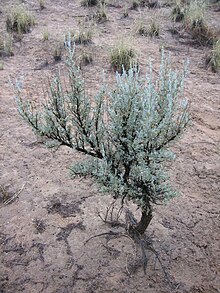
Back Sesquiterpè Catalan Seskviterpeny Czech Σεσκιτερπένια Greek Sesquiterpeno Spanish Seskiterpeno Basque Seskviterpeenit Finnish Sesquiterpène French Sesquiterpeno Galician Sesquiterpene Italian セスキテルペン Japanese


Sesquiterpenes are a class of terpenes that consist of three isoprene units and often have the molecular formula C15H24. Like monoterpenes, sesquiterpenes may be cyclic or contain rings, including many unique combinations. Biochemical modifications such as oxidation or rearrangement produce the related sesquiterpenoids.[1] A recent study conducted in the Cosmics Leaving Outdoor Droplets large cloud chamber at CERN, has identified sesquiterpenes—gaseous hydrocarbons that are released by plants—as potentially playing a major role in cloud formation in relatively pristine regions of the atmosphere.[2]
- ^ Eberhard Breitmaier (2006). "Sesquiterpenes". Terpenes: Flavors, Fragrances, Pharmaca, Pheromones. pp. 24–51. doi:10.1002/9783527609949.ch3. ISBN 9783527609949.
- ^ Dada, Lubna; Stolzenburg, Dominik; Simon, Mario; Fischer, Lukas; Heinritzi, Martin; Wang, Mingyi; Xiao, Mao; Vogel, Alexander L.; Ahonen, Lauri; Amorim, Antonio; Baalbaki, Rima; Baccarini, Andrea; Baltensperger, Urs; Bianchi, Federico; Daellenbach, Kaspar R. (2023). "Role of sesquiterpenes in biogenic new particle formation". Science Advances. 9 (36). doi:10.1126/sciadv.adi5297. PMC 10491295. PMID 37682996.
© MMXXIII Rich X Search. We shall prevail. All rights reserved. Rich X Search